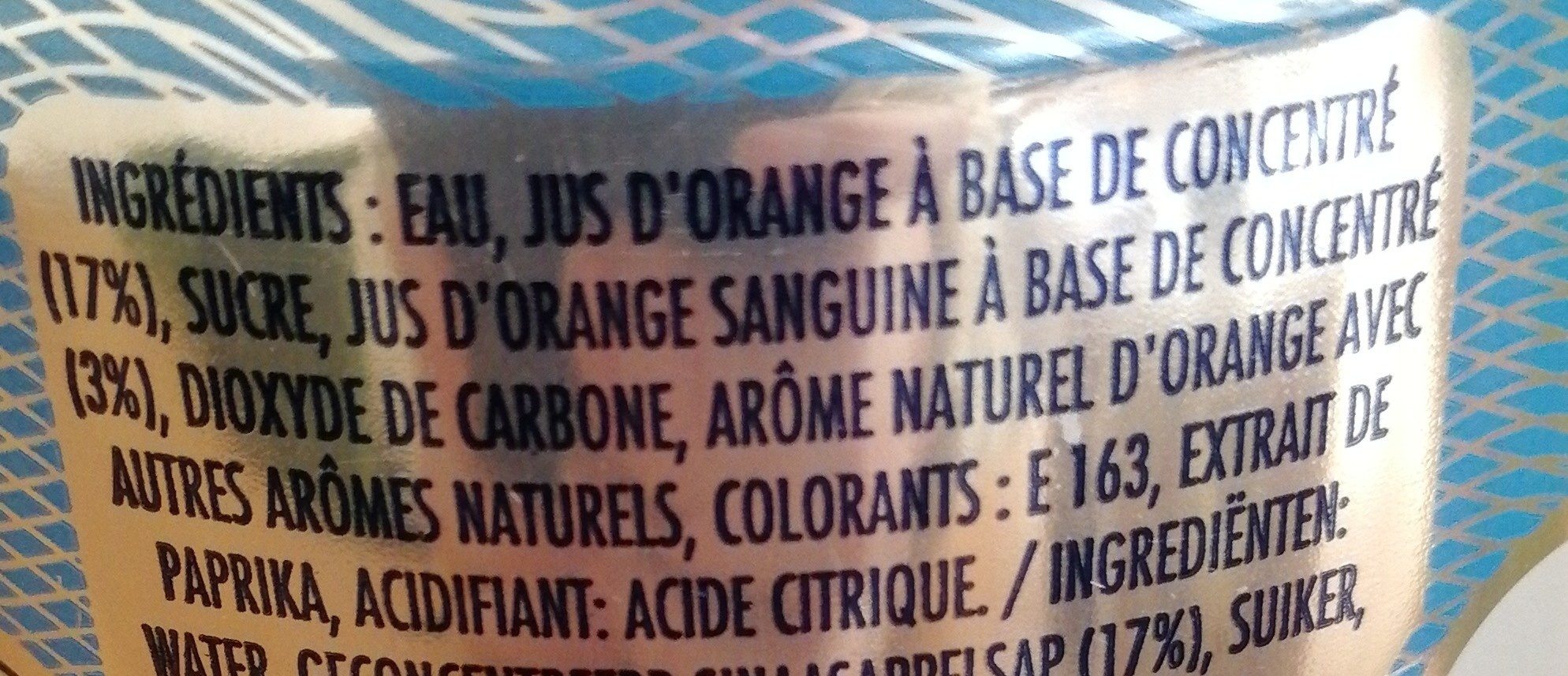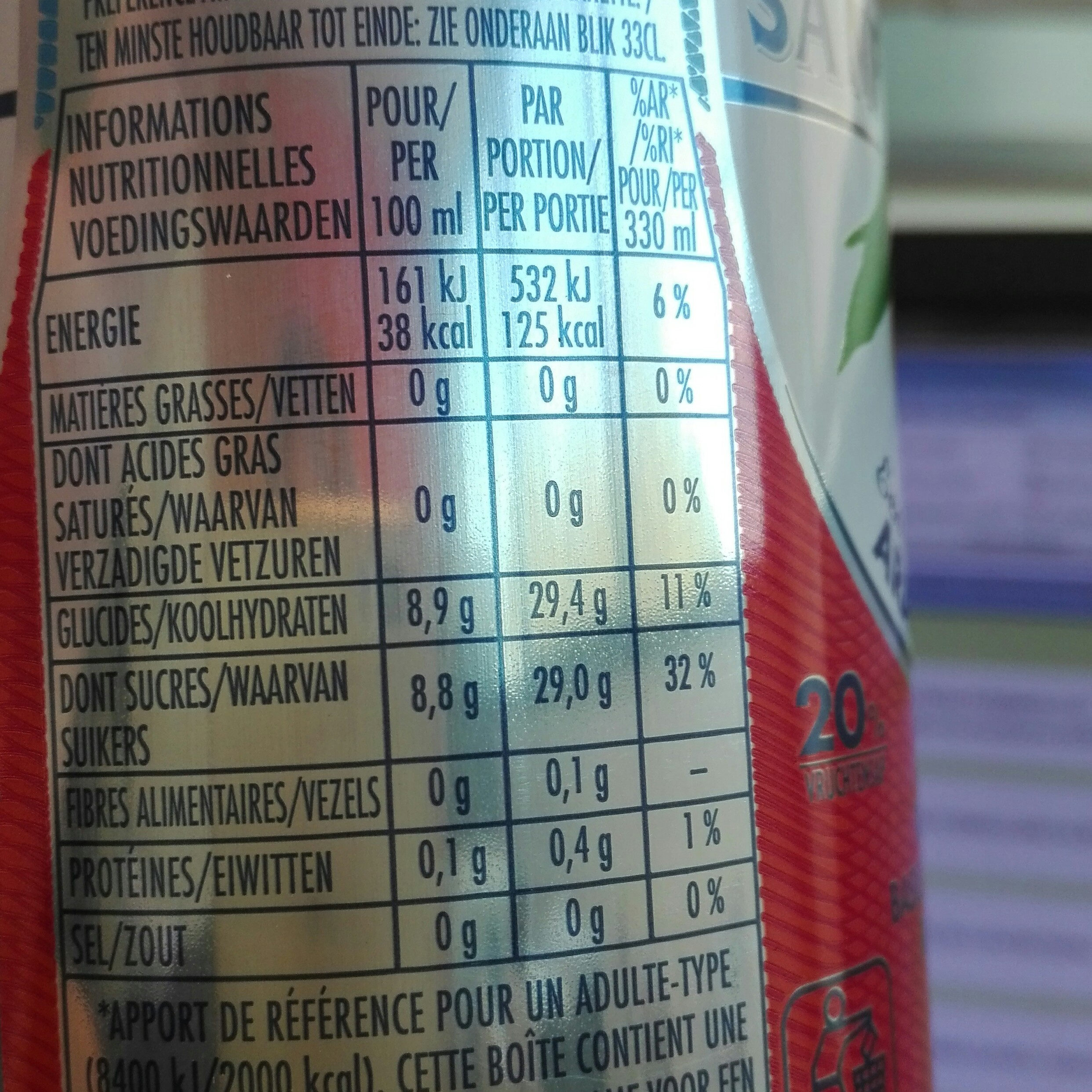Aranciata Rossa - San Pellegrino - 330 ml
This product page is not complete. You can help to complete it by editing it and adding more data from the photos we have, or by taking more photos using the app for Android or iPhone/iPad. Thank you!
×
Some of the data for this product has been provided directly by the manufacturer NESTLE WATERS.
Barcode: 8002270316531 (EAN / EAN-13)
Common name: Boisson pétillante aux jus d'orange et d'orange sanguine d'Italie à base de concentrés, aromatisée
Quantity: 330 ml
Packaging: Bottle, Can, Drink can
Brands: San Pellegrino, Nestlé
Categories: Plant-based foods and beverages, Beverages, Plant-based beverages, Carbonated drinks, Fruit-based beverages, Waters, Sodas, Fruit sodas, Orange soft drinks, Beverages with orange, Sweetened beverages
Labels, certifications, awards:
Green Dot, Triman

Manufacturing or processing places: Italie
Countries where sold: Belgium, France, Netherlands
Matching with your preferences
Environment
Packaging
Transportation
Other information
Preparation: Produit prêt à consommer
Conservation conditions: A conserver dans un endroit propre, frais, sec et sans odeur, à l'abri du soleil et du gel.
Customer service: NESTLE WATERS, 34-40 rue Guynemer 92130 Issy-les-Moulineaux
Report a problem
Data sources
The manufacturer NESTLE WATERS uses Equadis to automatically transmit data and photos for its products.
Product added on by openfoodfacts-contributors
Last edit of product page on by org-nestle-waters.
Product page also edited by cychou, danycontractor, elbarto, kiliweb, packbot, scanbot, sebleouf, telperion87, yuka.UXBnQ01LVWpxUDRsdGNZVHh4L24xZkIrd1lYMGYxS0xNT0FvSVE9PQ, yuka.Um9VdERZSU9ocVFVaXNZbTBUekUwSUpGK3J5RVFFcU1ET1FvSVE9PQ, yuka.UnJvRkxLUWJwY0Vxby9RUzRFM00rY05QMWJHc2VFS1dHOGNOSVE9PQ, yuka.UzRJL1A0ayt1ZlJUeXNWaTR4R0k1TnhMMjdPbUFHRHBFUFFhSVE9PQ, yuka.V2E5YVRhUlJ0dmtRa00wR3cwdmFwZGQ4NElLVVRHTG1kTFF1SVE9PQ, yuka.WDZZeVBhWWppL010eE1JY3J5NzMwK3hWM3FMMlowYnBKdTVJSUE9PQ, yuka.WGJneE42b2F1L0Jhb3ZBdTFDNkpwWUpNN0xPQUFsenZGZkpBSVE9PQ, yuka.WHY4ZU5idFp1UDFWdGZaZ3dDMzdvODkxK0tLTmJIdTFBTklXSVE9PQ, yuka.WWZvZkY2QXRodk1UeXZjejhTK1AxTkZRNUo2dFdFT3hCck1ESWc9PQ, yuka.ZDdnRElhYy9oZWtnZ3NkaTIwUGMwZEZhM2IyelRFaVNkOG9JSVE9PQ, yukafix.
Last check of product page on by sebleouf.










